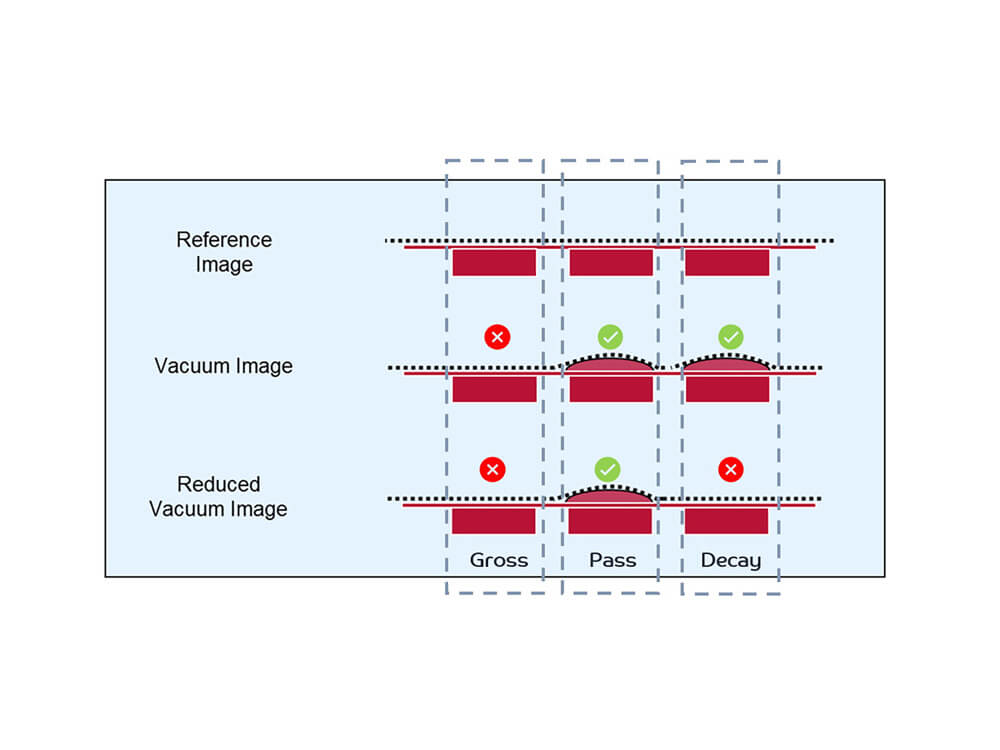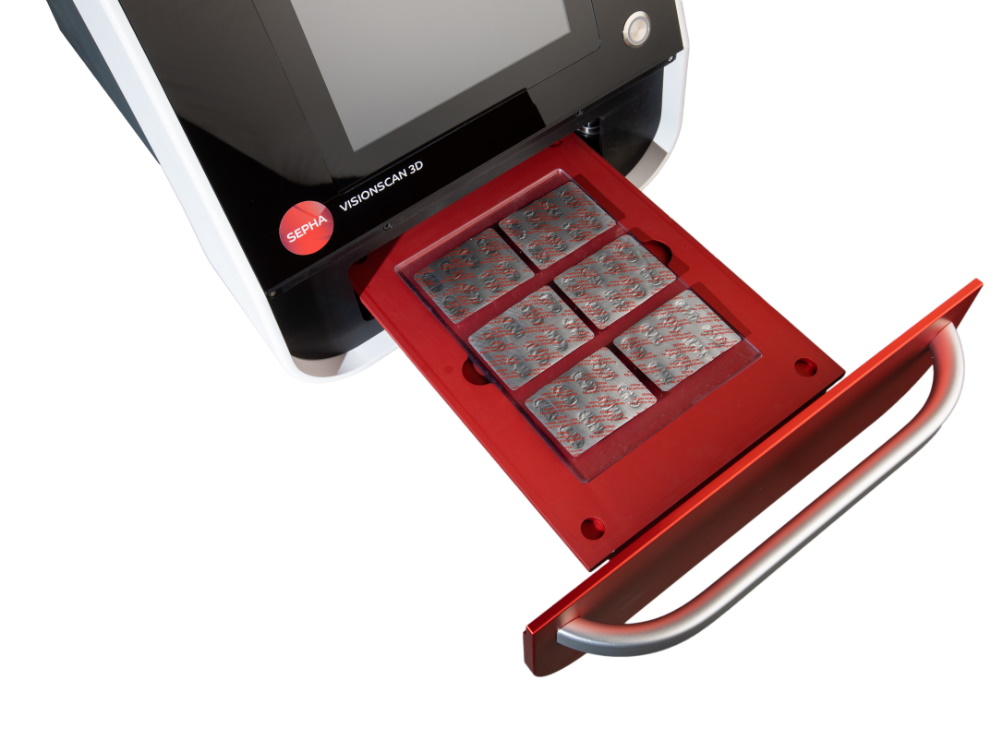Vacuum Deflection
Vacuum deflection is a non-destructive and deterministic leak test method to test the integrity of pharmaceutical blister packs and packs with multiple cavities/pockets, comprising of a rigid base and a flexible lidding foil.

It is used for an in-process check during blister production and during stability trials to rule out the variability of faulty packs in the study. Vacuum deflection by laser measurement is an approved ASTM F3169-16 standard test method for leak detection in blister packaging.

How does Vacuum Deflection testing work?
To conduct a vacuum deflection test, a blister pack is placed inside a vacuum test chamber.
The surface of the blister pack is scanned by a laser, to provide data points for subsequent deflection measurement. A vacuum is applied, and the pack surface is scanned a second time. The vacuum level is then reduced, and the pack is scanned once more.
Deflection refers to the difference in the height of the foil of a cavity under vacuum compared to the first data point when the cavity was not under pressure. A cavity with a large hole will show no difference in the foil, as the hole allows the pressure inside the pocket to equalise to the applied vacuum inhibiting foil movement. If there is no hole present in the cavity, the lidding foil will move, and the second scan will show a large deflection as the cavity expands as a result of the applied vacuum.
Cavities with small holes will initially expand because of the applied vacuum. The third scan is required to identify small holes. The variation in the average height at full vacuum and reduced vacuum is referred to as collapse. If the collapse is greater than normal, a small hole is present. This occurs as the air slowly escapes through a small defect, allowing the pressure inside the pocket to equalise with the applied vacuum.
Watch the process of Vacuum Deflection

What type of containers can be tested using vacuum deflection?
The vacuum deflection method is used for non-porous blister packs sealed with flexible lidding material.
These typically consist of thermoformed polymer or cold formed alumimum trays that contain tablets or capsules in individual blister pockets. The formed trays can be sealed with a polymer, foil or paper lidding material.
The method is non-destructive and is a clean alternative to blue dye testing. Results are deterministic as the method will give a pass or fail result based on set parameters. Depending on material, cavity size, blister pocket headspace, printing, texture and test requirements, the vacuum deflection test method can detect defects between 5µm and 50µm.

What is 3D Volumetric Measurement?
3D Volumetric measurement is non-destructive measurement technology to identify defects in blister packs.
It uses a 3D sensor to measure deflection of blister packs surfaces in response to an applied vacuum.
3D Volumetric measurement is an alternative technology to 2D laser and light intensity techniques used in the vacuum deflection test method by lasers. It measures volumetric change of individual blister pockets before and after vacuum.
Sepha has developed a patented 3D Leak Detection technology that provides sensitive results as low as 5 µm (pack and material dependent). The new technology can be applied to all foil types, matt or gloss. Different text patterns can be tested with one test method, making it ideal for production lines with multiple language print variations. The system is designed to allow for easy calibration, quick set up times and a streamlined validation process across different foil types.